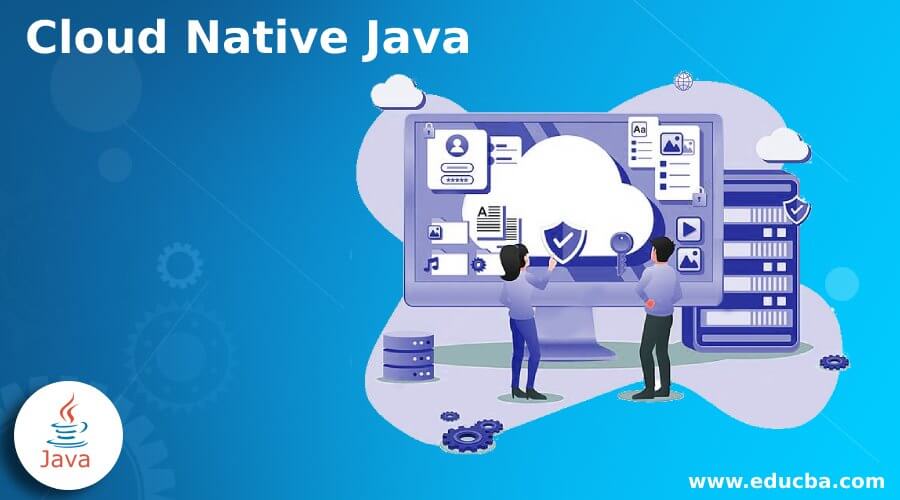Updated March 14, 2023

Introduction to Cloud Native Java
Cloud Native Java is an approach to building Java and JVM-based applications initially geared towards cloud frameworks. In this article, we shall go through Cloud Native on the Java platform and review the scope of capabilities of multiple utilities. Moreover, to understand the concept of Cloud Native methodology that rests on Micro Services, CI/CD, DevOps, and Containers. Although cloud Native has been the hottest topic in the IT Software Development field, most of the developers have thought that this will lose its hype and will not be able to stand in IT Market, but this has become the future of Software development. Therefore, cloud Native in Java has been one of the bigger trending technologies in the Software industry.
Why Cloud Native Java?
Java is a pervasive language for enterprise developers, but it is still not considered as the preferred Cloud Native runtime, according to Octoverse.
Even though Java and Enterprise Java are built upon traditional stack and optimized for cloud native, it requires much more memory comparatively and take time to start applications than other languages.
Modern platforms like Istio, Kubernates, Knative have small runtimes that can scale accordingly.
To get through these disadvantages, Cloud Native came into the picture.
And the major Benefits of Cloud Native Java applications is,
- Increase in Development productivity: As Developers, they want zero-configuration, easy injection of extensions, and live coding for implementing traditional applications.
- Optimizing to Serverless: Developers evolve microservices that are already available to the serverless applications when cloud native JRE provides super fast and small footprints.
- Enablement of Reactive programming: Developers have the ability to use Vert.x or EventBus to implement Reactive applications as well the traditional imperative applications.
- Adopting open-source projects and tools: Developers need integration with standard open-source projects or tools like Kubernates, RESTEasy, Vert.x, Kafka, Infinispan, Jaegar, etc.
Having all these above criteria, considerations for Cloud Native are clear on why Cloud Native is needed and is clear to design running containerized applications on Cloud Native and DevOps platforms.
Cloud Native Java Environment
The Key Components of Cloud Native Applications,
Cloud Native Java methodology incorporates below architecture principles,
- Microservices: It is a small and individual application that is deployed, upgraded, restarted independently, and scaled. Microservice architecture is loosely coupled. It runs independently by executing its own business logic and communicating with APIs or messaging services. These are lightweight compared to other monolithic architecture that are good for building cleaner interfaces.
- Containers: These are the alternative to Virtual Machines that leverage separate and lightweight OS-level virtualization offering speed and efficiency compared to Virtual Machines. The container is layered and includes components of Java applications that are required to run in the cloud. The lower overhead of containers makes it ideal for deploying individual cloud native microservice.
- CI/CD: Continuous Integration and Continuous Deployment enable faster and frequent reliability for applications. Using various other tools and technologies, app updates are pushed in production in an incremental manner through automation.
- DevOps: It is a collaboration between Software development and IT operations, including the union of processes and the end results ensuring automated delivery of software. The goal is creating an environment where development, testing, and releasing software happens consistently and rapidly in an automated manner. Each process is set up with the end goal for deploying to production at any given time.
Therefore, in brief, Cloud Native application development is an approach of building, deploying, managing Java-based applications that gear towards cloud frameworks.
Features of Cloud Native Java
Cloud Native applications exhibit some of the below-mentioned features,
- Microservices packed in containers.
- Support for various User Interfaces and devices.
- Well defines APIs for communication.
- Lower requirements for Manual management
- Applications built-in DevOps and deployed using CI/CD pipelines
- Access to various data store paradigms
- Dynamic scalability horizontally and vertically.
Cloud Native Java approaches
There are Cloud Native approaches that help development to become easier,
Approach 1: Java Virtual Machine in Linux Containers.
An important component of Cloud Native development is the Docker containers. Possible setup for such containers are,
- Hypervisor host OS that runs on a server in the cloud.
- Docker container that runs on guest OS.
- Guest OS that runs on Hypervisor Virtual Machine
- Java Virtual Machine runs Java bytecode on host CPU inside a docker container.
- All containers on the same host share kernel between each other.
The limitation with this approach is memory management; raising heap size above the allowance of the container might lead to errors.
Approach 2: Micro Profile
It is the classical approach in developing enterprise applications. Micro Profile services work in a services network typically built around the container management system. The approach is lightweight but can be inconvenient sometimes for those unfamiliar with Kubernates.
Approach 3: Native images with Spring Native
Native images are cloud native that allows in the creation of a progressive and developer-friendly environment. Furthermore, using this approach has several advantages: ease of transfer among systems, low memory footprint, and extensive toolkit in various programming languages.
Some of the restrictions include unusual behavior due to close world assumption, different Java execution compared to Java Virtual Machine due to difference between image run time and build time, and no operation with original bytecode.
Conclusion
With this, we shall conclude the topic “Cloud Native Java.” We have seen what Cloud Native is and its salient remarkable features. We have also seen the benefits of Cloud Native and its benefits, along with the key components that are involved in Cloud Native in Java applications.
Recommended Articles
This is a guide to Cloud Native Java. Here we discuss the benefits of Cloud Native Java and its benefits, along with the key components that are involved in Cloud Native. You may also have a look at the following articles to learn more –

